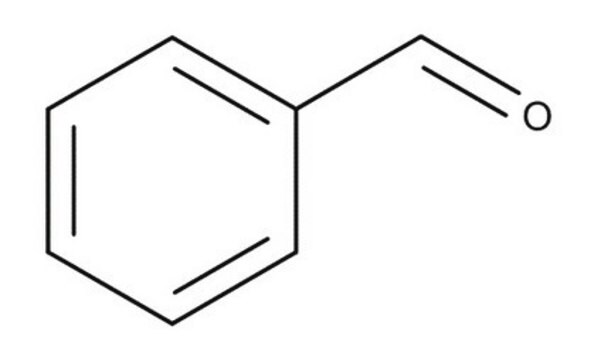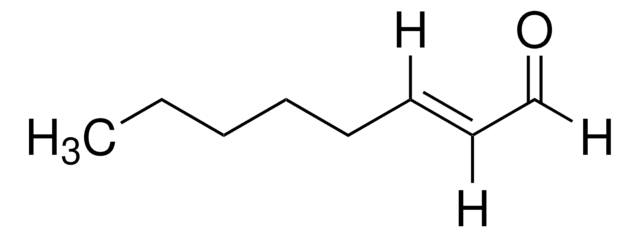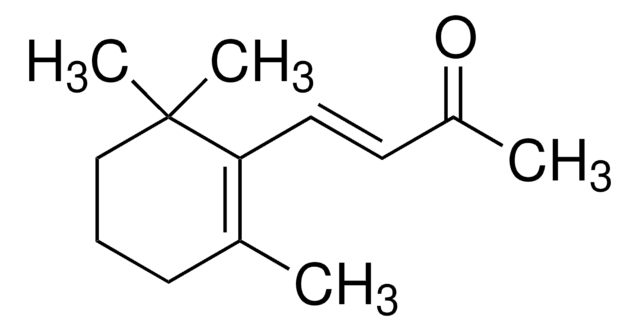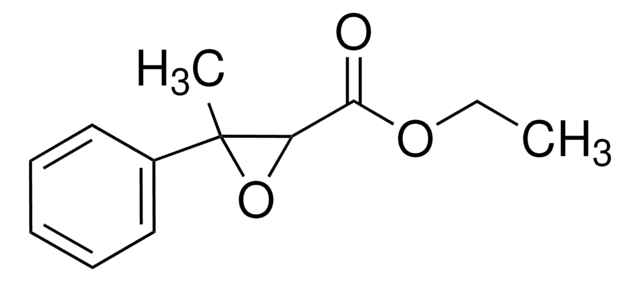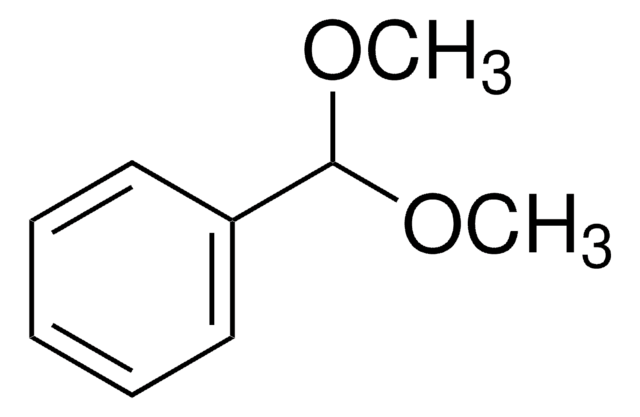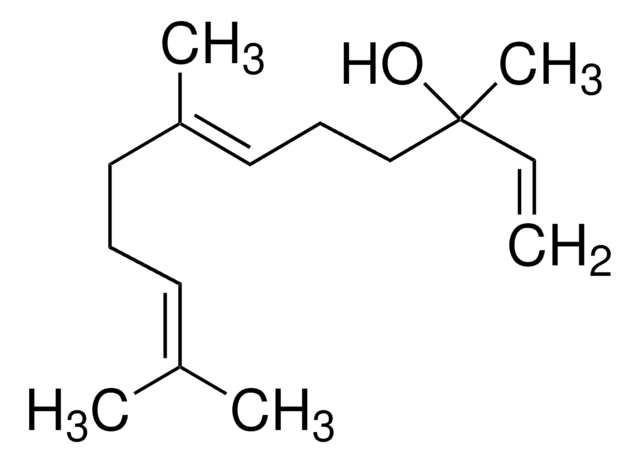W212709
Benzaldehyde
≥98%, FG, FCC
Sinónimos:
Bitter almond
About This Item
Halal
Kosher
Productos recomendados
biological source
synthetic
Quality Level
grade
FG
Halal
Kosher
agency
meets purity specifications of JECFA
reg. compliance
EU Regulation 1334/2008 & 178/2002
FCC
FDA 21 CFR 117
FDA 21 CFR 182.60
vapor density
3.65 (vs air)
3.7 (vs air)
vapor pressure
4 mmHg ( 45 °C)
assay
≥98%
form
liquid
autoignition temp.
374 °F
expl. lim.
1.4 %, 20 °F
refractive index
n20/D 1.545 (lit.)
pH
5.9 (20 °C)
bp
178-179 °C (lit.)
mp
−26 °C (lit.)
density
1.044 g/cm3 at 20 °C (lit.)
application(s)
flavors and fragrances
documentation
see Safety & Documentation for available documents
food allergen
no known allergens
organoleptic
almond; cherry; sweet
SMILES string
O=Cc1ccccc1
InChI
1S/C7H6O/c8-6-7-4-2-1-3-5-7/h1-6H
InChI key
HUMNYLRZRPPJDN-UHFFFAOYSA-N
¿Está buscando productos similares? Visita Guía de comparación de productos
Categorías relacionadas
General description
Application
- Volatolomics-assisted characterization of the key odorants in green off-flavor black tea and their dynamic changes during processing.: This study highlights the role of Benzaldehyde in identifying and characterizing key odorants in green off-flavor black tea, using advanced volatolomics techniques. This research provides essential insights into flavor science and the impact of processing methods on tea quality (Yang et al., 2024).
- Volatilome and flavor analyses based on e-nose combined with HS-GC-MS provide new insights into ploidy germplasm diversity in Platostoma palustre.: This research uses Benzaldehyde as a standard in electronic nose and gas chromatography-mass spectrometry analyses to explore plant volatilomes, significantly contributing to our understanding of plant biochemistry and genetic diversity (Zhong et al., 2024).
signalword
Danger
Hazard Classifications
Acute Tox. 4 Inhalation - Acute Tox. 4 Oral - Aquatic Chronic 2 - Eye Irrit. 2 - Repr. 1B - Skin Irrit. 2 - STOT SE 3
target_organs
Respiratory system
Storage Class
6.1C - Combustible acute toxic Cat.3 / toxic compounds or compounds which causing chronic effects
wgk_germany
WGK 1
flash_point_f
145.4 °F - closed cup
flash_point_c
63 °C - closed cup
ppe
Eyeshields, Faceshields, Gloves, type ABEK (EN14387) respirator filter
Elija entre una de las versiones más recientes:
¿Ya tiene este producto?
Encuentre la documentación para los productos que ha comprado recientemente en la Biblioteca de documentos.
Los clientes también vieron
Nuestro equipo de científicos tiene experiencia en todas las áreas de investigación: Ciencias de la vida, Ciencia de los materiales, Síntesis química, Cromatografía, Analítica y muchas otras.
Póngase en contacto con el Servicio técnico
